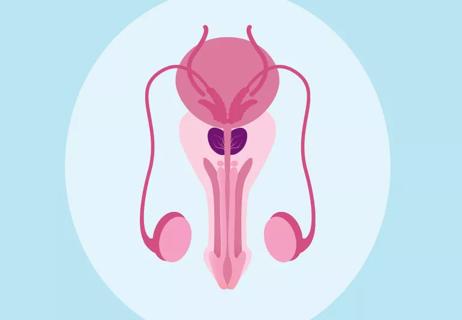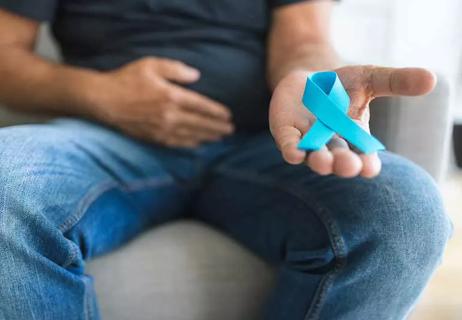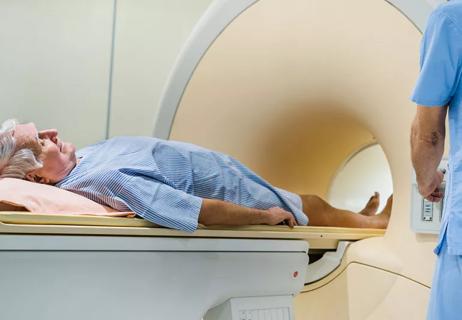High-intensity focused ultrasound (HIFU) provides new treatment options

If you have localized prostate cancer, you should know that a relatively new treatment — high intensity focused ultrasound (HIFU) therapy — may help you avoid surgery or radiation therapy. HIFU also produces fewer side effects than those common in more traditional treatments.
Advertisement
Cleveland Clinic is a non-profit academic medical center. Advertising on our site helps support our mission. We do not endorse non-Cleveland Clinic products or services. Policy
Some men are hesitant to talk to their doctors about their health and health concerns. This is especially true when it comes to prostate cancer, though it is the second leading cause of cancer-related deaths in men.
Urologist Ruben Olivares, MD, explains the basics about HIFU therapy and discusses the pros and cons of using it to treat prostate cancer.
The potential side effects of prostate cancer treatment include erectile dysfunction (ED), rectal symptoms and incontinence. But it’s a good idea to ask your doctor about HIFU, especially because it may help you avoid those side effects.
HIFU is a focal therapy technique that targets a specific area of the prostate rather than the whole gland.
High-intensity sound waves target the tumor through an ultrasound probe inserted into the rectum. The surgeon controls the probe with a robotic arm that moves in millimeters.
Dr. Olivares says HIFU “relies on our ability to localize tumors in the prostate using MRI and targeted biopsy, which builds on our prior experience of doing fusion biopsies.” He says this way of treating prostate cancer has the potential to effectively treat prostate cancer in some men while causing fewer side effects.
Advertisement
“HIFU uses better imaging, better biopsies and better ways of mapping out what’s going on in the prostate.” But he says it’s only for about 10% to 15% of all cases of prostate cancer.
There’s no lengthy hospital stay after the HIFU treatment.
“HIFU is an outpatient procedure,” Dr. Olivares says. “It generally lasts about 90 minutes and then you go home.”
You typically won’t need pain medications after HIFU because it isn’t as invasive as other treatments, he says. It doesn’t involve a surgical incision or radiation.
Many men worry that they’ll lose the ability to get an erection after prostate cancer treatment, Dr. Olivares says. The inability to control the bladder or rectal symptoms after radiation treatments are common side effects of more traditional treatments.
But Dr. Olivares says with HIFU, “There’s no incontinence, and no bowel symptoms. He says the data suggests since only part of your prostate is treated, the result is better preservation and potency.
“Some patients will experience some temporary diminishment in erections, but those with good pretreatment erections will be fine.”
If HIFU isn’t effective and the cancer returns, your doctor can pursue other options, including surgery.
Some treatment options such as radiation therapy generally aren’t used a second time because of the increased risk for negative side effects.
HIFU is typically used only for localized prostate cancer (cancer that hasn’t spread outside the prostate). It’s best suited for men who are in the early stages of prostate cancer. In more advanced stages when the cancer has moved beyond the prostate, HIFU therapy isn’t effective.
As a treatment for prostate cancer, HIFU has been in use for a little less than two decades outside of the United States.
In the U.S., the Food and Drug Administration (FDA) approved HIFU for prostate-related treatment in October 2015. Dr. Olivares says it’s important to note that this method is FDA approved for ablating prostate tissue. “It is not FDA approved for treating prostate cancer, specifically. That’s an important distinction,” he says.
Because of the fairly recent FDA approval, not all hospitals offer the treatment. Dr. Olivares says there are only a few sites in the United States that have the most modern devices for delivering HIFU.
Talking to your doctor about treatment options available for prostate cancer might be a tough conversation to have. But if you have a prostate cancer diagnosis, HIFU therapy is one option you should discuss with your doctor.
Advertisement
Advertisement
Learn more about our editorial process.
Advertisement

Possible signs include slow urine flow and loss of bladder control — but if this common cancer is caught before it spreads, the prognosis is good

You don’t have to cope in silence with issues like urinary incontinence and sexual dysfunction

Family history and genetics may heighten your risk for prostate cancer

Check-in with your care team, and focus on low-impact exercises and walking for good gains

Sex may be different after prostate cancer treatment, but it can still be enjoyable

Yep! Research shows a possible connection

Not following recommended follow-ups could put you at risk

MRI improves detection, but it's not yet a substitute for standard biopsy

Babies can get congested easily, but you can calm their cough by keeping them hydrated, using nasal drops and running a humidifier

Weight loss may cause loose, sagging skin and muscle loss to your rear

Several conditions, like vitiligo and fungal infection, can cause a loss of pigmentation, leading to white spots or patches on your skin